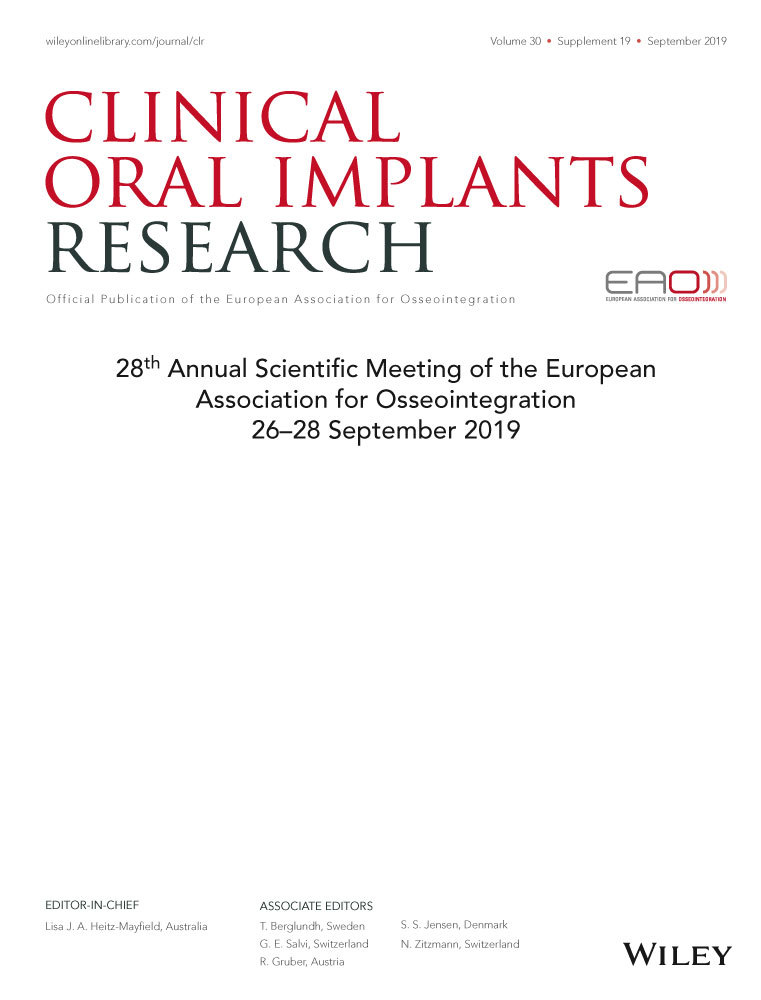The efficacy of antimicrobial photodynamic therapy and light-activated disinfection on zirconia implants- In vitro study
15673 POSTER DISPLAY BASIC RESEARCH
Background
Peri-implantitis is an disease affecting the soft and hard tissue around implants, resulting in the loss of supporting bone. With the increasing popularity of zirconia dental implants, the need for effective and predictable decontamination protocols of the implant surfaces is becoming more and more important.
Aim/Hypothesis
The aim of this study was to evaluate the effect of antimicrobial photodynamic therapy and light-activated disinfection on contaminated zirconia dental implants and investigate if the PDT and LAD cause implant surface alterations
Materials and Methods
Seventy-two zirconia dental implants were contaminated with a bacterial suspension prepared from three different bacteria. After contamination, the implants were randomly divided into four test groups (n = 12) according to the decontamination protocol- Group 1 (PDT1)- PDT (660 nm, 100 mW) with toluidine blue+ Group 2 (PDT2)- PDT (660 nm, 100 mW) with phenothiazine chloride dye+ Group 3 (LAD)- light emitting diode (LED) with toluidine blue+ Group 4 (TB)- toluidine blue without the application of light. In addition two control groups were used- the positive control (PC) group were treated with a 0.2% chlorhexidine-based solution, and implants assigned to the negative control (NC) group, did not receive any treatment.. The implants were analyzed using scanning electron microscope (SEM) to evaluate the possible surface alterations due to the PDT or the LAD protocols.
Results
All study groups reduced the number of CFUs significantly compared with the NC (P < 0.05) with more than 99% bacterial reduction. PDT1, the PDT2 and the LAD groups had the largest bacterial reduction, and were more efficient compared with the TB group (P < 0.05). SEM analysis did not reveal any alterations of the implant surface after the treatment procedures.
Conclusion and Clinical Implications
Both PDT protocols and the LAD showed high and equal effectiveness in decontamination of zirconia dental implants. Further clinical studies are needed in order to establish a clear and effective decontamination protocol of the zirconia implant surfaces using PDT or LAD.




